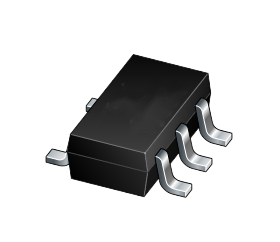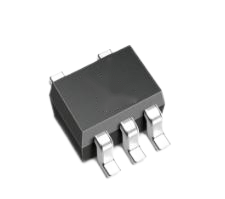产品详情
| 支持的串数 | 18 |
| 工作温度范围 | –40℃-125℃ |
| 工作电压范围 | 16V -95V |
| 睡眠模式静态电流 | 8.5uA |
| 电压采样精度 | ±3.0mV |
| 通讯方式 | SPI/隔离通讯 |
| 菊花链通讯速率 | 2.5Mbps/2Mbps |
| 耐负压能力 | 均衡Pins:±12V |
| 均衡电流 | 350mA |
| EMBMS1820PJP | 64-LeadLQFP_EP | LQFP_EP package, 64 pins12mm x 12mm; 1.6 mm (Max) height |
- Measures up to 18 battery cells in series
- Maximum lifetime TME: ±3mV at 3.3V per cell (-40℃ - 125℃)
- Stackable architecture for high voltage battery system
- Built-in isolated daisy chain communication interface
- 2.5Mbps isolated serial communications
- Uses a single twisted pair, up to 100 meters
- Low EMI susceptibility and emissions
- Bi-directional for broken wire protection
- 329 μs to measure all cells in a system
- Synchronized voltage and current measurement
- 16-bit Δ-Σ ADC with configurable third-order noise filter
- Passive cell balancing up to 350 mA (maximum) with Programmable PWM
- Hot plug tolerant without external protections: ±12V tolerant for S0 – S18, IPA, IPB, IMA, IMB pins; -6V - +12V tolerant for C0 – C18 pins
- 9 general-purpose digital I/O or analog inputs
- Temperature or other sensor inputs
- Configurable as an I2C or SPI master
- 8 μA sleep mode supply current
- Bus bar provisions
- 64-lead LQFP_EP package
EMBMS1820 is a multicell battery monitor that measures up to 18 series connected battery cells with a total measurement error (TME) of less than 3.0 mV. The wide cell measurement range is from 0V to 5.5V that makes the device suitable for most battery chemistries, such NCM, LFP, Sodium-ion and Lead-acid batteries etc. All 18 cells can be measured in 329 μs, and lower data acquisition rates can be selected for higher noise reduction.
Multiple EMBMS1820 devices can be connected in series, permitting simultaneous cell monitoring of stacked high voltage battery strings. Each EMBMS1820 has an isolated daisy chain communication interface for high speed (EMiso), RF immune, long distance communications. Multiple devices are connected in a daisy chain with one host processor connection for all devices. This daisy chain can be operated bi-directionally, ensuring communication integrity, even in the event of a fault along the communication path.
The device can be powered directly from the battery stack or from an isolated power supply. It integrates passive balancing up to 350mA for each cell, with individual pulse-width modulation (PWM) duty cycle control for each cell. The other features include an integrated 5 V regulator, 9 general-purpose I/O, and a sleep mode, where current consumption is reduced to 8 μA.





